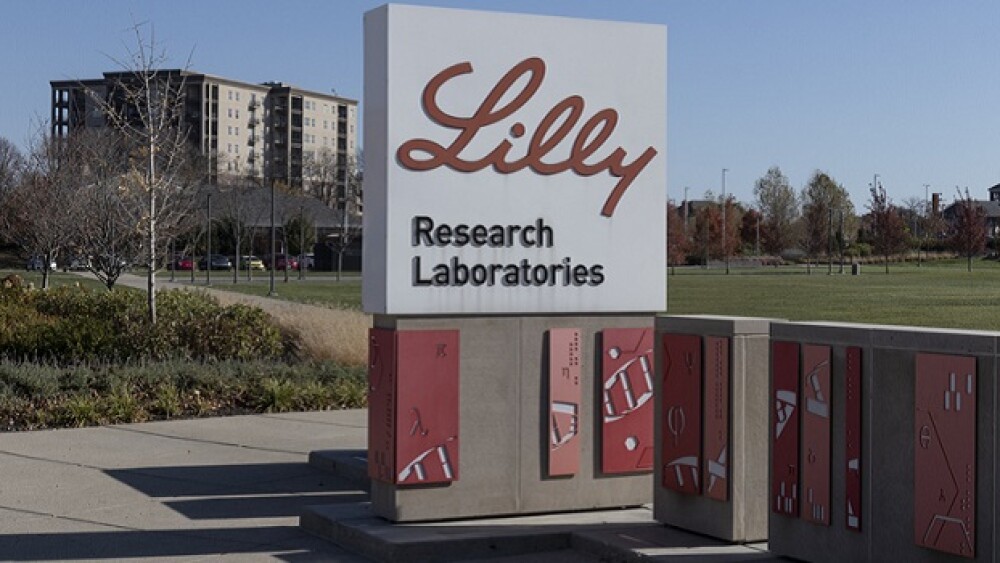Positive results from the MANDARA Phase III trial for FASENRA® (benralizumab) in patients with EGPA were published in the New England Journal of Medicine today,1 as the first head-to-head trial of biologics in patients with EGPA,2 and the first to demonstrate that more than half of patients achieved remission with eosinophil-targeting biologic therapies.
FASENRA enabled patients to taper off oral corticosteroids while preventing relapses
WILMINGTON, Del.--(BUSINESS WIRE)-- Positive results from the MANDARA Phase III trial for FASENRA® (benralizumab) in patients with EGPA were published in the New England Journal of Medicine today,1 as the first head-to-head trial of biologics in patients with EGPA,2 and the first to demonstrate that more than half of patients achieved remission with eosinophil-targeting biologic therapies.1 These findings were also presented today as a late-breaking poster at the American Academy of Allergy Asthma & Immunology (AAAAI) Annual Meeting in Washington, DC, February 23-26.3
MANDARA compared benralizumab to mepolizumab in patients with EGPA receiving oral corticosteroids (OCS) with or without stable immunosuppressive therapy.2 Patients were randomized to receive either a single 30 mg subcutaneous injection of benralizumab, or three separate 100 mg subcutaneous injections of mepolizumab, once every four weeks.2 Full results showed that benralizumab met the primary endpoint of the trial and demonstrated non-inferior rates of remission compared to mepolizumab.1 The primary endpoint of adjusted rate of remission was 59% for benralizumab-treated patients at weeks 36 and 48, compared with 56% for mepolizumab (difference in rates: 3%; 95% CI:, –13,18).1 Remission in EGPA is defined as Birmingham Vasculitis Activity Score (BVAS)=0 and OCS dose less than or equal to 4 mg/day.2
A higher proportion of FASENRA-treated patients were able to fully taper off OCS during weeks 48 through 52 (41% in the benralizumab arm vs. 26% in the comparator arm (difference: 16%; 95% CI: 1,31).1 Additionally, 86% of benralizumab patients vs. 74% in the comparator arm (difference: 12%; 95% CI: −1, 25) had at least a 50% reduction in OCS dose during weeks 48 through 52.1
Dr. Michael Wechsler, Professor of Medicine and Director of The Asthma Institute at National Jewish Health, and International Coordinating Investigator of the MANDARA trial said: “Patients with EGPA typically rely on long-term, high-dose OCS, which can cause serious and lasting side effects, and often suffer recurrent relapses when attempting to taper off their treatment. These findings are an exciting step forward as they affirm that eosinophil-targeting biologic treatments helped more patients achieve remission and taper off of steroid therapy.”
Sharon Barr, Executive Vice President, BioPharmaceuticals R&D, AstraZeneca said, “The results from this trial are an important step forward for the EGPA community, as this is the first trial to demonstrate that remission from EGPA with an eosinophil-targeting biologic is achievable for the majority of patients. This is a significant advancement and shows that benralizumab helped patients achieve remission and reduce chronic OCS usage, in a convenient, single, monthly subcutaneous injection, and could alleviate some of the impact of this debilitating disease.”
Elevated levels of eosinophils play a central role in EGPA disease pathophysiology.4 All patients with EGPA have very high levels of eosinophils at some point in their disease, both in peripheral blood and in affected tissues or organs.5,6 Approximately half of patients with EGPA have concomitant, adult-onset severe eosinophilic asthma, and often have sinus and nasal symptoms.5,7
FASENRA has a unique mode of action that leads to near complete depletion of eosinophils.8,9 Treatment with benralizumab was associated with a greater reduction of blood eosinophil counts from week 1 compared to mepolizumab and maintained at all timepoints.1 At week 1 mean blood eosinophil count ratio to baseline was 0.15 vs. 0.39 respectively (adjusted geometric mean ratio: 0.38; 95% CI: 0.29, 0.49) and 0.10 vs. 0.26 at week 52 (adjusted geometric mean ratio: 0.36; 95% CI: 0.27, 0.49).1 Benralizumab was well tolerated with no new safety signals, which is consistent with the known profile of the medicine.1
FASENRA is currently approved as an add-on maintenance treatment for SEA in 80 countries including the US, Japan and in the EU, and is approved for self-administration in the US, EU and other countries.10-13
AstraZeneca has been working with regulatory authorities around the world in order to bring benralizumab to EGPA patients as quickly as possible.
IMPORTANT SAFETY INFORMATION
CONTRAINDICATIONS
Known hypersensitivity to benralizumab or excipients.
WARNINGS AND PRECAUTIONS
Hypersensitivity Reactions
Hypersensitivity reactions (eg, anaphylaxis, angioedema, urticaria, rash) have occurred after administration of FASENRA. These reactions generally occur within hours of administration, but in some instances have a delayed onset (ie, days). Discontinue in the event of a hypersensitivity reaction.
Acute Asthma Symptoms or Deteriorating Disease
FASENRA should not be used to treat acute asthma symptoms, acute exacerbations, or acute bronchospasm.
Reduction of Corticosteroid Dosage
Do not discontinue systemic or inhaled corticosteroids abruptly upon initiation of therapy with FASENRA. Reductions in corticosteroid dose, if appropriate, should be gradual and performed under the direct supervision of a physician. Reduction in corticosteroid dose may be associated with systemic withdrawal symptoms and/or unmask conditions previously suppressed by systemic corticosteroid therapy.
Parasitic (Helminth) Infection
It is unknown if FASENRA will influence a patient’s response against helminth infections. Treat patients with pre-existing helminth infections before initiating therapy with FASENRA. If patients become infected while receiving FASENRA and do not respond to anti-helminth treatment, discontinue FASENRA until infection resolves.
ADVERSE REACTIONS
The most common adverse reactions (incidence ≥ 5%) include headache and pharyngitis.
Injection site reactions (eg, pain, erythema, pruritus, papule) occurred at a rate of 2.2% in patients treated with FASENRA compared with 1.9% in patients treated with placebo.
USE IN SPECIFIC POPULATIONS
A pregnancy exposure registry monitors pregnancy outcomes in women exposed to FASENRA during pregnancy. To enroll call 1-877-311-8972 or visit www.mothertobaby.org/fasenra.
The data on pregnancy exposure from the clinical trials are insufficient to inform on drug-associated risk. Monoclonal antibodies such as benralizumab are transported across the placenta during the third trimester of pregnancy; therefore, potential effects on a fetus are likely to be greater during the third trimester of pregnancy.
INDICATION
FASENRA is indicated for the add-on maintenance treatment of patients with severe asthma aged 12 years and older, and with an eosinophilic phenotype.
- FASENRA is not indicated for treatment of other eosinophilic conditions
- FASENRA is not indicated for the relief of acute bronchospasm or status asthmaticus
Please read full Prescribing Information, including
Patient Information and Instructions for Use.
You may report side effects related to AstraZeneca products.
Notes
Eosinophilic granulomatosis with polyangiitis
EGPA, formerly known as Churg-Strauss Syndrome, is a rare, immune-mediated inflammatory disease that is caused by inflammation of small to medium-sized blood vessels.4,5 It is estimated that 118,000 people throughout the world live with EGPA.14
EGPA can result in damage to multiple organs, including lungs, upper airway, skin, heart, gastrointestinal tract and nerves.5 The most common symptoms and signs include extreme fatigue, weight loss, muscle and joint pain, rashes, nerve pain, sinus and nasal symptoms, and shortness of breath.5,6 Without treatment, the disease may be fatal.5,6 Almost half (47%) of patients do not achieve remission with current treatments.15
There are limited treatment options for EGPA. Patients are often treated with chronic high-dose OCS and experience recurrent relapses when attempting to taper off OCS.6,16 Mepolizumab is currently the only approved treatment for EGPA.17
MANDARA
MANDARA was a randomized, double blind, double-dummy, active-controlled, parallel group, multicentre 52-week Phase III trial which compared the efficacy and safety of FASENRA to mepolizumab in adult patients with relapsing or refractory EGPA.2 In the blinded trial, 140 patients were randomized 1:1 (70 per treatment group) to receive either a single 30mg subcutaneous injection of FASENRA or three separate 100mg subcutaneous injections of mepolizumab once every four weeks.1
The primary endpoint was the proportion of patients who were in remission at both weeks 36 and 48.2 Remission is defined as Birmingham Vasculitis Activity Score (BVAS)=0 and OCS dose less than or equal to 4 mg/day.2 FASENRA remission was compared to the historical placebo rate from mepolizumab’s Phase III trial, MIRRA.18 The primary statistical analysis was to demonstrate non-inferiority of FASENRA versus mepolizumab based on the primary endpoint.1
All patients who complete the 52-week double-blind treatment period were eligible to continue into an ongoing open label extension (OLE) period, intended to allow each patient at least one year of treatment with open-label FASENRA.2
Mepolizumab is a humanized IL-5 antagonist monoclonal antibody.3
FASENRA
FASENRA is a monoclonal antibody that binds directly to IL-5 receptor alpha on eosinophils and attracts natural killer cells to induce rapid and near-complete depletion of blood and tissue eosinophils in most patients via apoptosis (programmed cell death).8,9
FASENRA (benralizumab) is currently approved in more than 80 countries, including the US, EU, Japan, and is approved for self-administration in the US, EU and other countries.10-13 FASENRA has been prescribed to over 120,000 patients globally.19
FASENRA is in development for other diseases including chronic obstructive pulmonary disease, chronic rhinosinusitis with nasal polyps and hypereosinophilic syndrome.20-22
FASENRA was developed by AstraZeneca and is in-licensed from BioWa, Inc., a wholly-owned subsidiary of Kyowa Kirin Co., Ltd., Japan.
Respiratory & Immunology
Respiratory & Immunology, part of AstraZeneca BioPharmaceuticals, is a key disease area and growth driver to the Company.
AstraZeneca is an established leader in respiratory care with a 50-year heritage and a growing portfolio of medicines in immune-mediated diseases. The Company is committed to addressing the vast unmet needs of these chronic, often debilitating, diseases with a pipeline and portfolio of inhaled medicines, biologics and new modalities aimed at previously unreachable biologic targets. Our ambition is to deliver life-changing medicines that help eliminate COPD as a leading cause of death, eliminate asthma attacks and achieve clinical remission in immune-mediated diseases.
AstraZeneca
AstraZeneca (LSE/STO/Nasdaq: AZN) is a global, science-led biopharmaceutical company that focuses on the discovery, development, and commercialization of prescription medicines in Oncology, Rare Diseases, and BioPharmaceuticals, including Cardiovascular, Renal & Metabolism, and Respiratory & Immunology. Based in Cambridge, UK, AstraZeneca operates in over 100 countries and its innovative medicines are used by millions of patients worldwide. Please visit www.astrazeneca-us.com and follow the Company on social media @AstraZeneca.
References
1. Wechsler ME, et al. Benralizumab versus Mepolizumab for Eosinophilic Granulomatosis with Polyangiitis. N Engl J Med. 2024.
2. Clinicaltrials.gov. Efficacy and Safety of Benralizumab in EGPA Compared to Mepolizumab. (MANDARA). Available at: https://classic.clinicaltrials.gov/ct2/show/NCT04157348. [Last accessed: January 2024].
3. Late Breaking Abstracts Presented at Scientific Sessions 2024 AAAAI Annual Meeting February 23-26, 2024. Available at: https://www.jacionline.org/pb-assets/Health Advance/journals/ymai/AAAAI_2024_LateBreaking_Abstracts-1707140446317.pdf. [Last accessed: February 2024].
4. Furuta S, et al. Update on eosinophilic granulomatosis with polyangiitis. Allergol Int. 2019;68:430-436.
5. American Partnership for Eosinophilic Disorders. Eosinophilic Granulomatosis with Polyangiitis (EGPA). Available at: https://apfed.org/about-ead/eosinophilic-granulomatosis-with-polyangiitis/. [Last accessed: January 2024].
6. Baldini C, et al. Clinical Manifestations and Treatment of Churg-Strauss Syndrome. Rheum Dis Clin N Am. 2010;36:527–543.
7. Cottin V, et al. Respiratory manifestations of eosinophilic granulomatosis with polyangiitis (Churg–Strauss). Eur Respir J. 2016;48:1429-1441.
8. Kolbeck R, et al. MEDI-563, a humanized anti-IL-5 receptor a mAb with enhanced antibody-dependent cell-mediated cytotoxicity function. J Allergy Clin Immunol. 2010;125:1344-1353.e2.
9. Pham TH, et al. Reductions in eosinophil biomarkers by benralizumab in patients with asthma. Respir Med. 2016;111:21-29.
10. AstraZeneca news release. Available at: https://www.astrazeneca.com/media-centre/press-releases/2019/fasenra-approved-in-the-us-for-self-administration-in-a-new-pre-filled-auto-injector-the-fasenra-pen-04102019.html. [Last accessed: January 2024].
11. AstraZeneca news release. Available at: https://www.astrazeneca.com/media-centre/press-releases/2019/fasenra-receives-positive-eu-chmp-opinion-for-self-administration-and-the-new-fasenra-pen-a-pre-filled-single-use-auto-injector-01072019.html. [Last accessed: January 2024].
12. AstraZeneca Annual Report 2023. Available at: https://www.astrazeneca.com/content/dam/az/Investor_Relations/annual-report-2023/pdf/AstraZeneca_AR_2023.pdf. [Last accessed: February 2024].
13. AstraZeneca news release. Fasenra met the primary endpoint in the MANDARA Phase III trial in eosinophilic granulomatosis with polyangiitis (EGPA). Available at: https://www.astrazeneca.com/media-centre/press-releases/2023/fasenra-phase-iii-egpa-trial-met-primary-endpoint.html#:~:text=Positive%20high%2Dlevel%20results%20from,EGPA)%20who%20were%20receiving%20oral. [Last accessed: February 2024].
14. AstraZeneca Data on file. 2022. REF-167820.
15. Wechsler ME, et al. Mepolizumab or Placebo for Eosinophilic Granulomatosis with Polyangiitis. N Engl J Med. 2017:376;1921-1932.
16. Bell CF, et al. Burden of illness and costs associated with eosinophilic granulomatosis with polyangiitis: evidence from a managed care database in the United States. J Manag Care Spec Pharm. 2021;27(9):1249-1259.
17. Mepolizumab US prescribing information. Available from: https://www.accessdata.fda.gov/drugsatfda_docs/label/2023/125526Orig1s021,761122Orig1s011Corrected_lbl.pdf [Last accessed: January 2024].
18. AstraZeneca Data on file. 2023. REF-196096.
19. AstraZeneca Data on File. 2022. REF-153839
20. Clinicaltrials.gov. Efficacy and Safety of Benralizumab in Moderate to Very Severe Chronic Obstructive Pulmonary Disease (COPD) With a History of Frequent Exacerbations (RESOLUTE). Available from: https://clinicaltrials.gov/ct2/show/NCT04053634. [Last accessed: September 2023].
21. Clinicaltrials.gov. Efficacy and Safety Study of Benralizumab in Patient With Eosinophilic Chronic Rhinosinusitis With Nasal Polyps (ORCHID). Available at: https://clinicaltrials.gov/ct2/show/NCT04157335. [Last accessed: January 2024].
22. Clinicaltrials.gov. A Phase 3 Study to Evaluate the Efficacy and Safety of Benralizumab in Patients With Hypereosinophilic Syndrome (HES) (NATRON). Available from: https://clinicaltrials.gov/ct2/show/NCT04191304. [Last accessed: January 2024].
Veeva ID: Z4-61457 Date of Preparation: Feb 2024
View source version on businesswire.com: https://www.businesswire.com/news/home/20240223997402/en/
Contacts
Brendan McEvoy +1 302 885 2677
Jillian Gonzales +1 302 885 2677
US Media Mailbox: usmediateam@astrazeneca.com
Source: AstraZeneca





